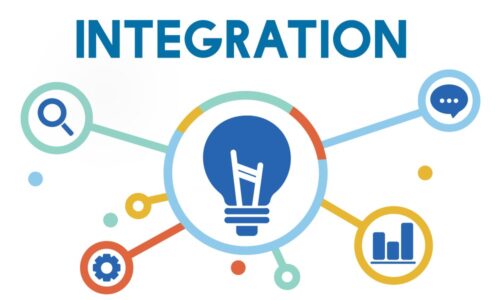Welcome to your first foray into Integrations! You’ve heard about Integrations, and that they were complex to learn, right? It’s all in how you explain it!
In these courses, you will learn integrations by the book and by practice, but through analogies, strategies, and punagies puns!!
Our goal is to help grow the number of people who understand Integrations, because the more Integrations that are out there, the more connected we are! This is the first of many integrations that are available for the future.
If you need any help, please email support@integrations.academy
Features
- Grasp the basic concepts and terminologies associated with REST.
- Understand how the Internet works and the role of HTTP/HTTPS in web communications.
- Learn different types of integrations and how they apply in various contexts.
- Develop skills to read and interpret RESTful APIs.
- Gain hands-on experience with making HTTP requests and handling responses.
- Familiarize yourself with HTTP status codes and their significance.
- Explore the differences between synchronous and asynchronous integrations.
- Implement best practices for securing APIs and handling errors.
- Build and deploy your own RESTful services
Target audiences
- Software developers new to REST and web services.
- Technical leads and architects looking to deepen their integration knowledge.
- IT professionals tasked with managing and implementing integrations.
- Students and enthusiasts eager to learn about modern web technologies.
Requirements
- Basic understanding of the internet
- Next we will cover the Terminology
Curriculum
- 5 Sections
- 21 Lessons
- Lifetime
- Introduction to IntegrationsWe will walk you through the key information needed to continue the REST of the course. This is the starting point for learning about integrations, providing not only an introduction but also a deeper understanding of the fundamental concepts that lie beneath the surface.7
- 1.1Integrations Primer: Do, Re, Mi
- 1.2Terminology: Flashcards
- 1.3Around the World (Wide Web) in :80 Ports
- 1.4Authentication vs Authorization: Access Granted
- 1.5JSON Content vs XML Tags: Formatting Integration Data
- 1.6Demystifying Integration Standards: REST, SOAP, JDBC
- 1.8Quiz: Introduction to Integrations5 Questions
- Pieces of the PuzzleHave you ever thought about your process for completing a puzzle? Do you pick out one piece and start trying or do you take out all the pieces, organize them, and then define your plan for how you are to going to complete. What we want to do, is layout the pieces of the puzzle and once all the pieces displayed, we can find the Edges. Once the edges are defined, you can then fill in the puzzle with the new information you now have.10
- 2.0CRUD: Verb Methods
- 2.1Postman, cUrl, ServiceNow: But How?
- 2.2Reading RESTful: Take a look, it’s in a book
- 2.3Request: Ask a Question to Who?
- 2.4Request Headers: So Meta
- 2.5Request Query Parameters: And Then?
- 2.6Request Body: Question or Content
- 2.7Response: Receive Answer
- 2.10Status Codes: 200 OK
- 2.11Quiz: Pieces of the Puzzle5 Questions
- Hello World; My First IntegrationWe will walk through how to set up your first Integration. Have you download Postman (or use your own) system. PHP, Python, ServiceNow, etc. You will be focused on making sure you can get your basic first calls, and not doing anything with the data yet. We'll get to that in later courses!4
- Signed, Sealed, Delivered: I'm SecuredWe are getting into the secondary information concerning Security and Messages. ---- Signed: Signed Certificates to make sure the site is secure. ---- Data Encryption: Making sure that your data is locked behind some credentials and a role. ---- Messages (Success/Info/Error): Making sure that the User, the Backend System, and the Owners are aware of every event they SHOULD know about.4
- Final Exam: Do you have it? REST of KnowledgeDo you feel comfortable enough to complete your own integration using the basic concepts? Try it out and follow up back here if you have any questions.1
Instructor
George Feeny was Cory's sixth grade teacher (later retconned to being Cory's teacher from first grade and then retconned again into being his teacher from sixth grade) as well as the neighbor of the Matthews family.
As the series progresses, he starts working in the John Adams High School, just when the main characters begin to attend there. Eventually, he becomes the principal, and later on a college professor at Pennbrook. From the start of the series, Feeny attempts to be strictly a teacher to his students, but later develops close relationships with Cory, Shawn, Topanga and especially Eric. Feeny acts like more the authority figure than a mentor.
KITT is an artificially intelligent electronic computer module in the body of a highly advanced, very mobile, robotic automobile from Knight Rider.

